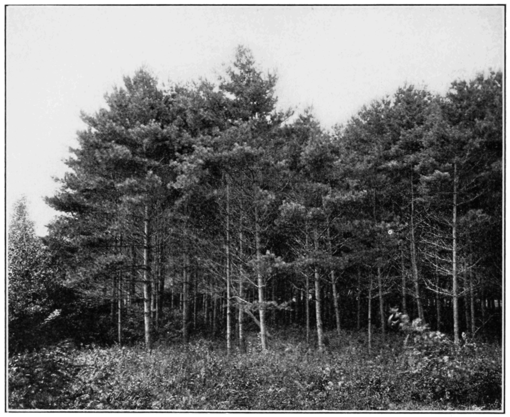hyphenated word was joined on the previous page because of the intervening image.— Ineuw talk 07:40, 9 December 2013 (UTC) (Wikisource contributor note)
to the place of planting in pails of mud. The holes in which they are to be set should be made with a grub hoe or light spade, the soil pulverized, and in planting the roots should be given their natural position, the soil firmed around them, and they should be set two or three inches deeper than the surrounding surface. A young forest should have the sides that are exposed to the prevailing winds more densely planted than elsewhere; wind being one of the forest's worst enemies.
In planting a small tract of even five acres, there may occasionally be a small piece of ground such as the bottom of a ravine, with soil fertile enough to sustain hardwood trees such as the sugar maple, ash, chestnut or oak, and if so, such kind of trees had better be planted, both to improve the appearance of the forest and to attract birds. Two men
Natural Reproduction of White Pine, twenty-five feet high and six to eight inches in diameter, on the Daniel Webster farm at Marshfield, Mass. Grown from seed of pines that were planted by Mr. Webster eighty-six years ago. (Photographed August, 1902.)
can work well together. The first digs the hole; the other, following with the young trees, plants the tree. If the job is large, quite a number of men may be employed; in such case, the two men who started the first row should keep two trees in advance of the men on their right. Two men can plant 1,400 trees in eight hours.
Pine grows very slowly the first ten years, but afterwards rapidly up to about its eightieth year; after that it will grow for two centuries or more, but too slowly to earn good interest on the capital it represents.

